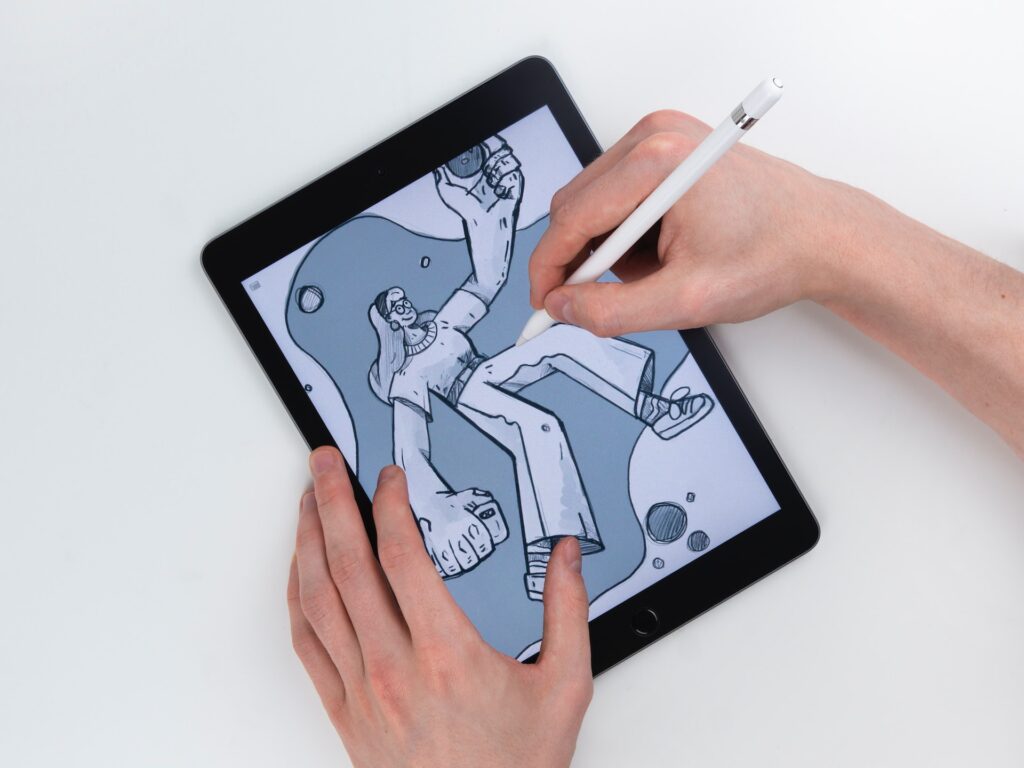In the world of graphic design, visual communication is paramount. The use of compelling imagery and design elements can captivate audiences and convey messages in a way that words alone cannot achieve. One such powerful design element is illustration. From hand-drawn artwork to digital illustrations, this versatile technique has the ability to transform designs and elevate visual communication to new heights. In this article, we will explore the significance of illustration as a design element and delve into its impact on enhancing visual communication in graphic design.
What is Graphic Design?
Graphic design is a creative field that encompasses the visual communication of ideas, concepts, and messages through the use of typography, imagery, color, and layout. It involves the creation of visually appealing and functional designs for various mediums, such as print, digital, and multimedia. Graphic designers combine their artistic skills, technical knowledge, and creativity to create designs that communicate effectively and visually engage the audience.
What is Illustration in Graphic Design?
Illustration is the art of creating visual representations, often hand-drawn or digitally rendered, to convey a message, story, or concept. In graphic design, illustration serves as a powerful design element that enhances the visual communication of a design project. Illustrations can range from simple and minimalist to intricate and detailed, depending on the desired style and purpose. They can be used in various design mediums, including advertisements, branding, packaging, editorial design, and web design, among others.
The Importance of Graphic Illustration
Graphic illustration plays a crucial role in graphic design by adding depth, personality, and visual interest to a design. Here are some key reasons why graphic illustration is important.
- Enhancing Visual Appeal
Illustrations can make a design visually appealing and captivating. They can add a unique touch, create a distinct style, and help the design stand out in a crowded marketplace.
- Telling Stories
Illustrations have the power to tell stories visually, capturing the attention of the audience and conveying complex messages in a compelling way. They can evoke emotions, create a narrative, and leave a lasting impression on viewers.
- Communicating Brand Identity
Illustrations can help establish and reinforce a brand’s identity by visually representing its values, personality, and key messages. They can contribute to creating a cohesive and recognizable brand image.
- Engaging the Audience
Visual elements, such as illustrations, have the ability to engage and connect with the audience on an emotional level. They can evoke curiosity, spark interest, and encourage interaction with the design.
- Adding Creativity and Originality
Illustrations allow designers to showcase their creativity and bring unique concepts to life. They offer endless possibilities for expressing ideas in visually striking and imaginative ways.
7 Tips to Create Captivating Designs Using Illustrations
Design is more than just aesthetics: it’s about effectively communicating ideas, evoking emotions, and capturing attention. By implementing these seven tips into your design process, you’ll be able to enhance the visual impact of your creations and create designs that stand out from the crowd.
From understanding the power of color psychology and mastering the art of typography to leveraging negative space and creating a harmonious composition, each tip will provide you with valuable insights and practical techniques to elevate your designs to new heights. Whether you’re designing for print, digital media, or any other medium, these tips will serve as guiding principles to help you create captivating visuals that leave a lasting impression.

- Understand the Purpose and Audience
Before incorporating illustrations into your designs, it’s essential to understand the purpose of the project and the target audience. Consider the tone, style, and message you want to convey through your illustrations. Tailor your illustrations to resonate with the audience and align with the overall design objectives.
- Maintain Consistency with Branding
When using illustrations in graphic design, ensure they align with the established branding guidelines. Maintain consistency in terms of colors, styles, and visual elements to create a cohesive and recognizable brand identity. Illustrations should seamlessly integrate with other design elements to strengthen the overall brand image.
- Embrace Different Illustration Styles
Experiment with different illustration styles to find the one that best suits the project and resonates with the audience. Whether it’s hand-drawn illustrations, digital illustrations, or vector graphics, each style has its unique visual appeal and can evoke different emotions. Choose a style that complements the message and enhances the overall design aesthetic.
- Use Illustrations to Tell Stories
One of the greatest strengths of illustrations is their ability to tell stories. Capitalize on this by incorporating illustrations that visually narrate a concept, communicate a message, or evoke emotions. Create a narrative flow within the design, guiding the viewer’s eye and leading them through the story you want to convey.
- Balance Illustrations and Typography
Finding the right balance between illustrations and typography is crucial in graphic design. Ensure that the typography and illustrations work harmoniously together, complementing each other to create a visually appealing composition. Consider the hierarchy of information and use illustrations strategically to support and enhance the message conveyed through typography.
- Pay Attention to Composition and Layout
The composition and layout of your design play a vital role in the effectiveness of illustrations. Consider the placement of illustrations, negative space, and the overall balance of elements within the design. Ensure that the illustrations guide the viewer’s gaze and create a visual hierarchy that highlights the most important information.
- Adapt Illustrations for Different Platforms
In today’s multi-platform world, it’s essential to consider how your illustrations will appear across various mediums. Adapt your illustrations to different platforms, such as print, digital, or mobile, ensuring they retain their impact and visual appeal. Test your designs on different devices to ensure they are optimized for each platform.
Final Thoughts
In conclusion, illustration is a powerful design element that holds immense potential in enhancing visual communication in graphic design. From its ability to convey complex concepts with simplicity to evoking emotions and capturing attention, illustrations have become an integral part of the creative landscape.
By incorporating illustration into graphic design, designers can elevate their visual storytelling, add personality to their designs, and create unique brand identities. The versatility of illustration allows for endless possibilities, whether it’s creating whimsical characters, conveying abstract ideas, or showcasing intricate details.
The importance of illustration in graphic design cannot be understated. It not only enhances visual communication but also adds depth, creativity, and a human touch to designs. Illustrations can break through language barriers, engage diverse audiences, and create memorable experiences that leave a lasting impact.
As technology continues to advance, the possibilities for integrating illustration into graphic design are expanding. With digital tools and software, designers can explore new techniques, experiment with styles, and push the boundaries of their creativity.
Whether you’re a seasoned designer or just starting your creative journey, embracing illustration as a design element opens up a world of opportunities to captivate, inspire, and connect with your audience. So, let your imagination run wild, experiment with different styles, and harness the power of illustration to elevate your visual communication in graphic design.
In this ever-evolving visual landscape, illustration remains a timeless and captivating design element that continues to shape and enrich the world of graphic design. So, go forth, unleash your creativity, and let illustration be your guide to enhancing visual communication and creating designs that make a lasting impression.
